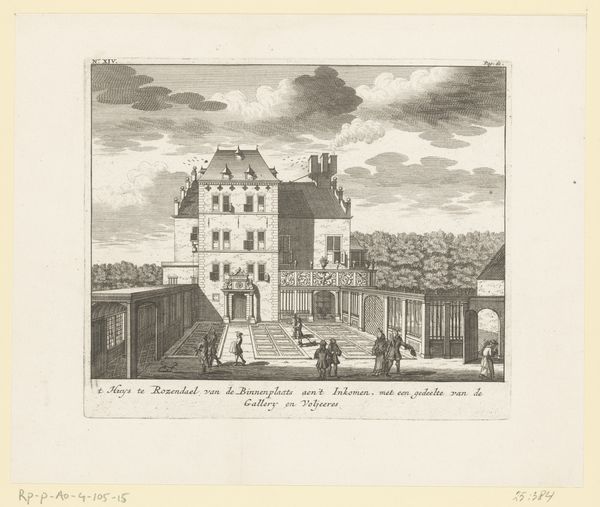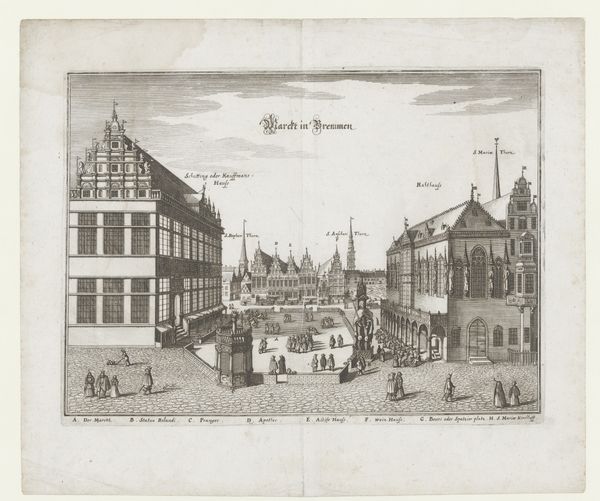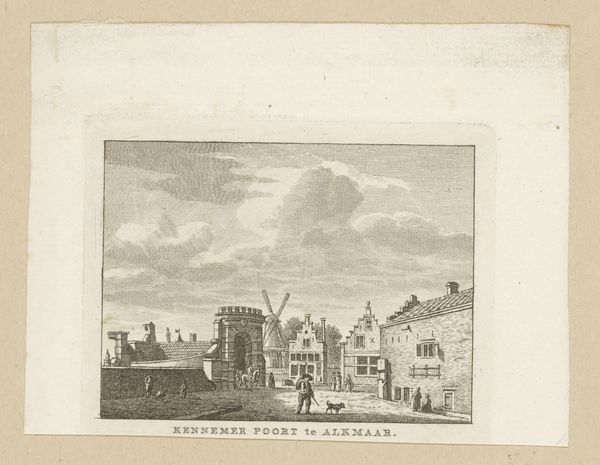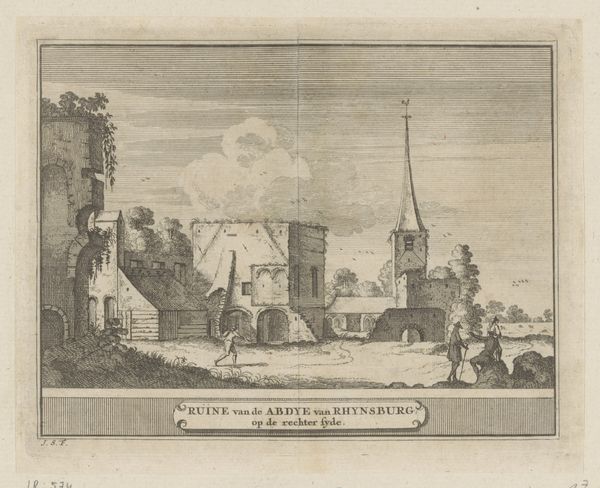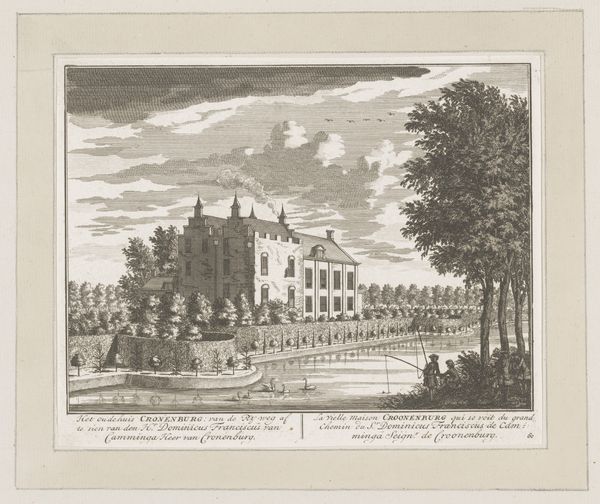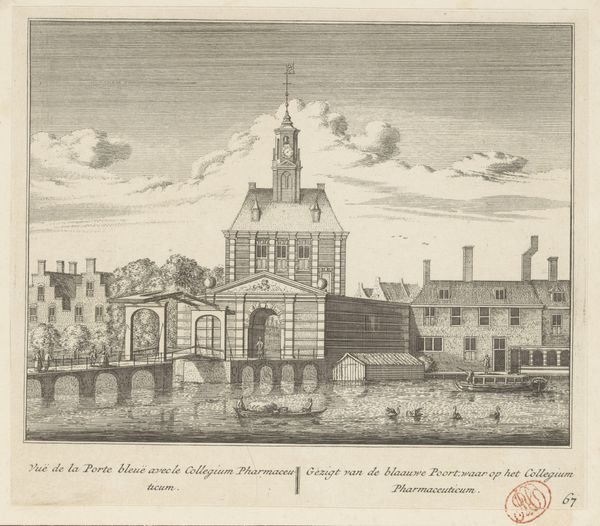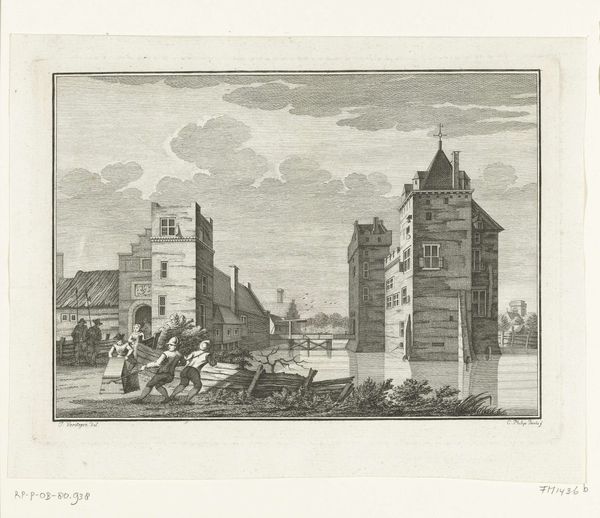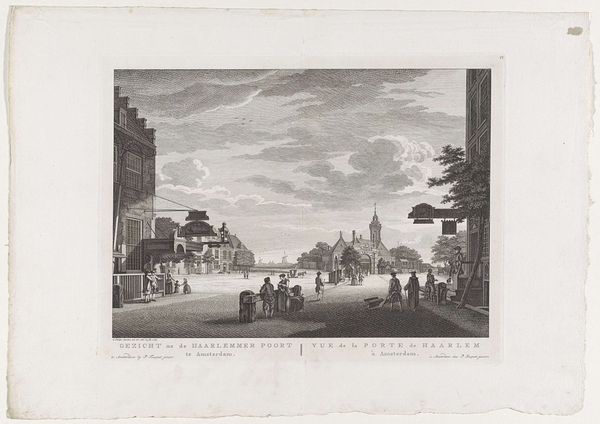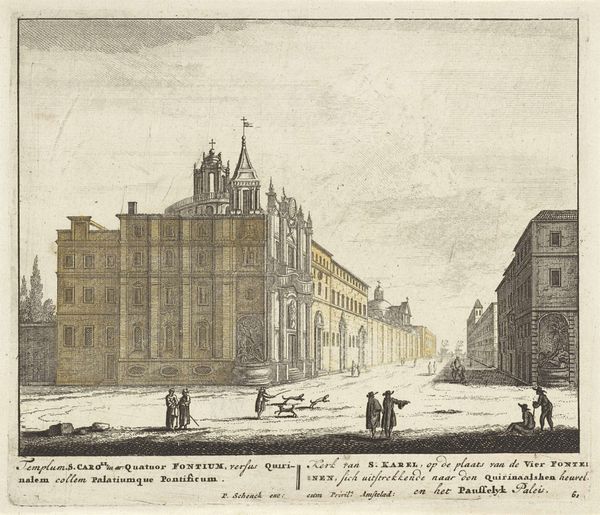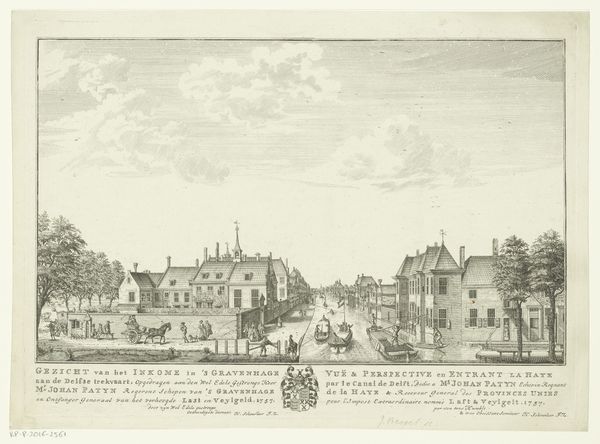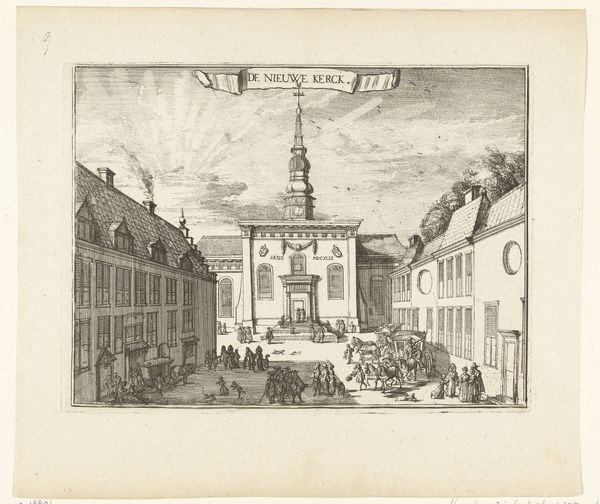
print, engraving
#
baroque
#
dutch-golden-age
# print
#
cityscape
#
engraving
Dimensions: height 163 mm, width 204 mm
Copyright: Rijks Museum: Open Domain
Editor: Here we have "Stadhuis te Oudewater," a 1747 engraving by Johannes van der Spyck, housed in the Rijksmuseum. It's a highly detailed cityscape. What strikes me is the stillness and order in the composition; it feels almost staged. What stands out to you? Curator: Well, given its context, what you call "staged" points to something deeper. Consider the role of printmaking in the Dutch Golden Age. It was a medium accessible to a broader public, and cityscapes like this weren’t merely topographical records. Editor: You mean, there’s more to it than just showing what the town hall looked like? Curator: Exactly. These prints shaped civic identity and reinforced social hierarchies. Van der Spyck presents Oudewater's town hall not just as a building but as a symbol of governance and civic pride. Notice the figures, meticulously placed, almost performing their social roles. How do they contribute to the image? Editor: Now that you mention it, there’s a formality to them, almost like they are actors. Perhaps their placement emphasizes the town hall as a stage for civic life? Curator: Precisely! The print becomes a performance of order, a deliberate construction of public image intended for dissemination and consumption. Do you see this as propaganda, or something else? Editor: I wouldn’t necessarily say propaganda, but definitely carefully curated representation of civic identity. It highlights how art actively shaped perceptions of social structures. Curator: Absolutely, it's a fascinating intersection of art, politics, and public perception. I never thought about the figures as performing, but you’ve certainly given me something to think about.
Comments
No comments
Be the first to comment and join the conversation on the ultimate creative platform.
